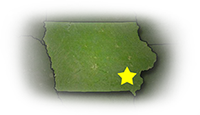Mother Nature doesn’t always follow the rules. She sends wind, lightning, and other weather elements that can cause disruptions in your service.
After a storm, outages can sometimes occur at several points in an electric system. At Access Energy Cooperative our goal is to get the power back on for everyone in the most efficient, safe manner while restoring electricity to the greatest number of consumers in the shortest amount of time.
When a widespread outage occurs, here’s how our repair crews work:
- they first check substations
- then work their way out on the main distribution line, restoring service to the main feeder lines
- then they move to lines serving groups of homes
- and finally individual consumers
Fixing the damage at an individual home first is useless if the main line is dead-no electricity would flow into the home anyway. By repairing the main line first, many more people will have their power restored.

